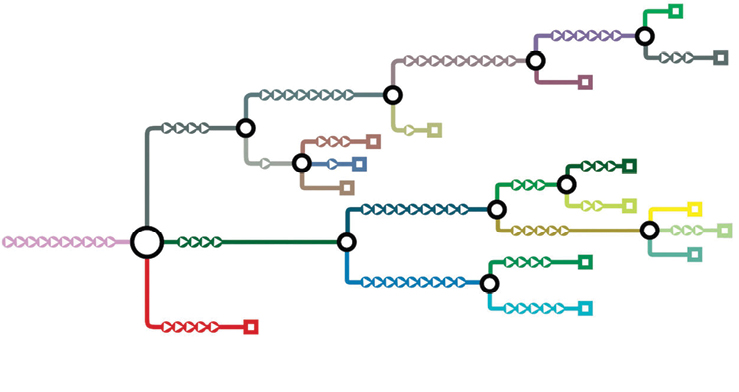115
Technical Research |Abstracting the Human Systems
114
Technical Research |Abstracting the Human Systems
This is, of course, only one example of utilizing population percentages within a crowd simulation. Different locations and cultures will need different studies, and as such, it is impossible to accommodate all scenarios. This method of using probability within decision making, however, can be utilized at varying degrees of scale and accuracy, meaning the actual numbers of probability does not need to be 100% accurate to create a believable decision within a crowd. Without doing extensive population studies, logical assumptions can still be made to supplement these variables. This means that at this stage of prototyping, it is possible to use simple logical assumptions based on previously-studied crowd behaviors as a starting point. It then becomes possible to generate probability variables and tweak it as required based on the element within the system. For instance, within a gallery, it can be assumed that larger displays will attract more attention than smaller displays; within a shopping center, it can be assumed that larger or more general stores will attract more attention than smaller or more niche stores; within a train stations, it can be assumed that trains heading to downtown will attract more people than trains going to the suburbs as a function of the time of day. While the resulting crowd might not be as accurate as ones made with specific population studies, it will still have enough nonlinearity to establish emergence within the system, allowing it to pass as a believable visualization for architectural design.
These probabilities can be further manipulated by variables such as object distances, attraction, and crowding, as well as agent energy, comfort, goals, and hunger. For example, “[c]ognitive processing theories predict that people who move quickly are less likely to find time for social responsibilities, particularly when those responsibilities involve strangers.”[26] As such, one of these variables could be correlated to their walking speed, where a faster speed would reduce the chance of the agent interacting with others. While these additional variables are not mandatory at larger scales to create realistic crowds, the consideration of each additional variable would provide added complexity and realism at the smaller scale to each individual agent within the system. It is, however, not feasible to implement all these considerations at this stage of initial prototyping, thus it is important to be selective and focus on implementing the more notable ones—such as object distance and crowding. (Fig. 2.3.25) The notability of these two particular variables comes from the fact that they relate to agent densities. By prioritizing this on the microscale, it is possible to improve agent movements within higher traffic spaces on the macro scale. This in turn smooths movement flows within the simulation.
Taking all this into account, the decision logic becomes like a probability-based choose your own adventure game for the agents. If you are in a room with a door and a chair, do you go to the chair? Or do you go to the door? If you choose the door, what do you do in the next room? (Fig. 2.3.28 - 29) Each person might choose something different, and while it may be impossible to know what each person will choose, through the choices of many agents, the overall system will reflect a scenario where a certain percentage of the population may choose the chair while another percentage may choose the door. In an average population there will be a certain percentage of people who would choose A, another percentage would choose B, and yet another that would choose C. Depending on what these choices represent, some of them might have a higher probability of being chosen compared to others. None of these choices are right or wrong, but instead are utilized as a way of creating
26 Levine and Norenzayan, “The Pace of Life in 31 Countries,” 200.
distributions within the crowd in order to inform the decision-making process. This is the potential of distributed agents; by simplifying these choices into percentages on the individual scale, the illusion of choice is created for the individual and the illusion of complexity is created within the collective.



70%
30%
If you are in a room with a door and a chair, do you go to the chair? Or do you go to the door?
Illustrated by Author, chair and door graphics taken from “STEFAN Chair - Brown-Black,” IKEA, accessed December 28, 2019, https://www.ikea.com/ca/en/p/stefan-chair-brown-black-00211088/, and “ReliaBilt Colonist Primed 6-Panel Hollow Core Molded Composite Pre-Hung Door (Common: 30-in x 80-in; Actual: 31.5625-in x 81.6875-in),” Lowe’s, accessed December 28, 2019, https://www.lowes.
A decision Tree based on percentages
By Chooseco, from Sarah Laskow, “These Maps Reveal the Hidden Structures of ‘Choose Your Own Adventure’ Books,” June 13, 2017, Atlas Obscura, accessed December 27, 2019, http://www.atlasobscura.com/articles/cyoa-choose-your-own-adventure-maps.